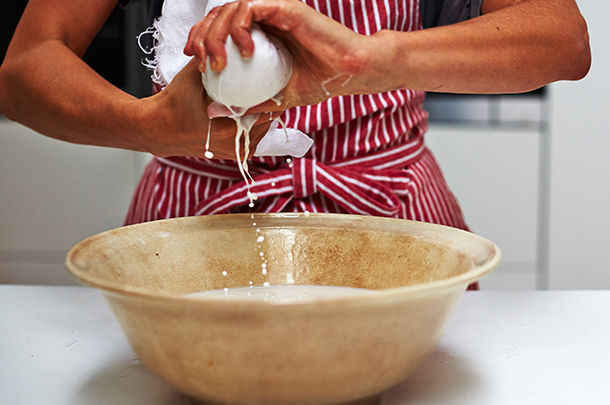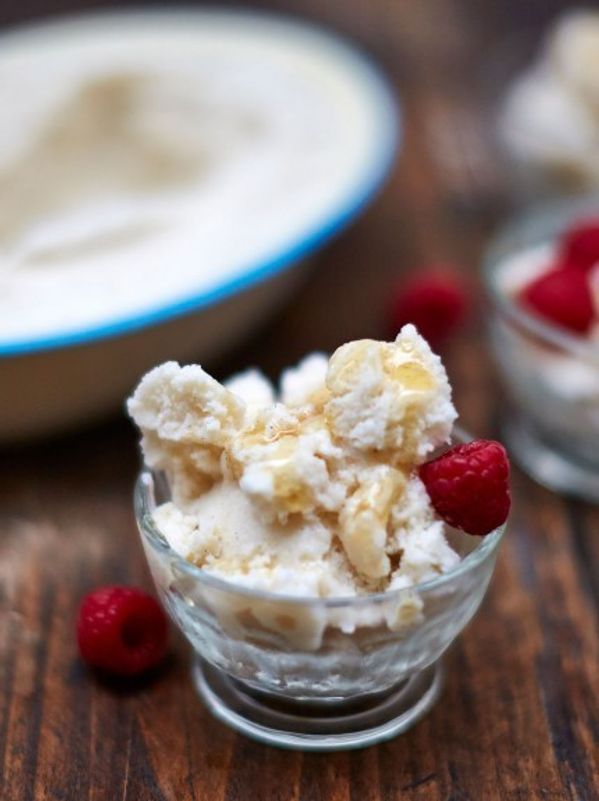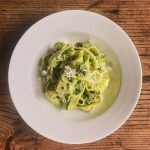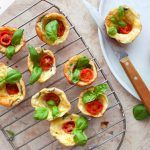Words and recipe by Ariyele Ressler
Growing up, my brother was both asthmatic and allergic to dairy. As a child, I had little empathy for his struggle when the ice cream truck sang its siren song through the streets of our neighbourhood and all the kids ran from their houses screeching with glee, gripping dollar bills in tight fists, salivating in anticipation of the soft serve cones covered in sprinkles or hard-shell chocolate.
His body simply rejected dairy and he’d sneeze for hours, congested and itchy and miserable, while I happily ate the same things with no issues. It wasn’t until a mysterious chronic illness forced a close investigation of my dietary triggers that I realized some of my symptoms were triggered by dairy, and cutting it out meant instant relief.
My experience of feeling better was motivation enough to keep dairy out, but my foodie heart ached for what dairy added to my diet. So, I’ve discovered the wonders of dairy substitutes that don’t feel like pale imitations of the original. Dairy-free life has never been easier than it is today, and knowing what substitutes work best in what contexts will make it even breezier.
Almond milk is always in my pantry or fridge. Making it yourself is easy, watch Danielle Hayley show you how here:
But yields a highly perishable product, so using them quickly (within 3-4 days) is imperative.
Almond milk is my go-to dairy sub for coffee and tea. It has a subtle nutty flavor, and can make coffee taste hazelnutty, which is a match made in heaven. It also does the same work as cream in scrambled eggs without asserting any distracting strong flavors, and is great as the base for granola and oatmeal because of its creamy texture. It’s also wonderful in quick bread recipes like pancakes and waffles.
Coconut milk is my other go-to – it’s luxurious, creamy, and decadent. I’ll usually add this to smoothies, since the fruit in smoothies naturally love to be paired with coconut. Another plus is the high healthy fat content, which makes it great for making ice cream, custards, whipped cream, patisserie cream, and in most cases where cream is called for (think scalloped potatoes).
The market has exploded with coconut, rice, almond, and soy milk based dairy substitutes for just about every food that traditionally had dairy (ice cream, yoghurt, pudding, milk, and desserts) that it’s important to try them for yourself and pick something you and your family like best. Of course, making it yourself means you make it exactly how you like it – try Jamie’s amazing dairy-free ice cream, for a start.
Then there’s all the naturally dairy-free ingredients – whole fruits, vegetables and egg based dressings like aioli or homemade mayonnaise, and let’s not forget dark chocolate – bless the universe! The food gods can be kind.
When it comes to the simpler things like buttered toast, I opt for ghee (also known as clarified butter), which is butter that’s had the milk solids removed. All allergies vary, and because mine is to lactose I can tolerate yoghurt (where the lactose has been digested by the probiotics and bacteria strains), and certain hard cheeses that are well aged (similar story). If you suspect you have a dairy allergy, be sure to check with your general practitioner before experimenting with eating other forms of dairy—and always listen to your body’s response above all else.
Whatever your reason for needing to keep dairy out of your diet, you will not suffer as long as you know what to substitute where. And remember: what grows together, goes together, so there’s no way to fail if you’re focusing on what’s fresh, seasonal, and local to you—dairy or not.
Below is a recipe for a gluten and dairy-free zucchini (courgette, to UK readers) bread that’ll come in handy for the time of year where zucchini is going crazy and you want to make a loaf of it. I use homemade almond milk and olive oil and have a great end result. Watch the video and see for yourself!
Gluten-free zucchini bread recipe
For the flour mix
- 1½ cups sweet white rice flour
- ½ cup & 3 tbsp oat flour
- ½ cup brown rice flour
- ½ cup teff flour
For the bread
Dry:
- 1 cup gluten free flour blend from above mix
- 1/3 cup coconut sugar
- 1 tbsp coconut flour
- 1 cup grated zucchini, patted dry with paper towels to remove moisture
- 1 tbsp grated ginger, very fine (roughly an inch of ginger, preferably grated on a microplane)
- 2 tsp lemon zest (about half lemon)
- 1 tsp baking power
- 1 tsp salt
- ¼ tsp curry powder
- ¼ rounded tsp dry ginger
- ¼ tsp cinnamon
- pinch of nutmeg
- pinch of chili powder
Wet:
- 1 egg (about 2 oz)
- ½ cup almond milk (preferably homemade, but if not, one without added gums)
- 3 tbsp olive oil (or any fat you’d like; I’ve tried the recipe with ghee, butter, and coconut oil – all came out great)
Directions:
To make the zucchini bread I recommend using muffin tins, but the call is yours.
- Preheat oven to 350ºF (180ºC)
- Combine all dry ingredients into a bowl. Sift if your coconut sugar is lumpy, or use your fingers to break them up into powder.
- Combine all wet ingredients in a bowl and whisk until egg is just beaten.
- Add the wet ingredients to the dry ingredients and stir with a spatula or wooden spoon (do not beat) until a batter forms. Add your zucchini, ginger, and lemon zest. Stir to combine.
- Coat a mini muffin tin, regular muffin tin, or baking loaf with ghee or melted butter and spoon in your batter.
- Bake for 50 minutes, or until an inserted toothpick comes out clean. Let them cool on a wire rack for about five minutes. Enjoy!
























